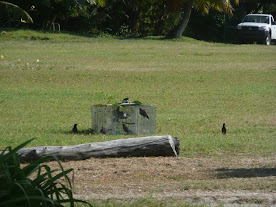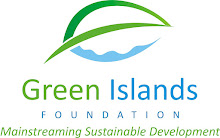The third week of December 2010 saw representatives of the Mangroves
For the Future initiative (MFF) visit Seychelles to assess progress of
the national projects under their purview. On the 17th of December GIF
made a presentation on the Artisanal Shark Fishery Project to the MFF
representatives and then later that day met with them to go over the
project budget and disbursement to date. After that the MFF reps had the
opportunity to meet with some of the Artisanal Shark Fishermen (ASF)
based at Anse Etoile on Mahe. The MFF personnel expressed their
satisfaction with the project implementation to date.
The 3rd of February saw another major landmark in the project namely the first Annual General Meeting of the Artisanal Shark Fishers’ Association (ASFA) - the development and registration of which was enabled by this project. GIF facilitated the meeting and representatives of the Seychelles Fishing Authority, MFF and the National Media were also in attendance. The AGM went well and succeeded in making the Association operational through its: endorsement of the Articles of Association, election of a Board of Directors, elaboration of a priority action plan and establishment of a Management Committee to oversee day-to-day activities.
The meeting also provided the opportunity for the handover of equipment purchased under the project. The equipment in question (three digital cameras and water-proof housings, measuring tapes and waterproof notebooks) is to enable the fishers to gather data on their catch. The format for data gathering has also been developed under this project. Lack of data on coastal shark populations in Seychelles is one of the key obstacles to informed management of the fishery and ASFA has identified the collection of data as one of its priority activities.
So the operationalisation of ASFA - one of the key objectives of the GIF project – has been attained and should enable the Fishers to fulfil their role under the Seychelles National Plan of Action for the Conservation and Management of Sharks.
A couple of other activities remain to be completed namely the production of educational posters on coastal sharks and the artisanal shark fishery in Seychelles respectively and the formulation and submission of the terminal report to MFF. Check back for further updates in the coming weeks (Contributed by John Nevill).






The 3rd of February saw another major landmark in the project namely the first Annual General Meeting of the Artisanal Shark Fishers’ Association (ASFA) - the development and registration of which was enabled by this project. GIF facilitated the meeting and representatives of the Seychelles Fishing Authority, MFF and the National Media were also in attendance. The AGM went well and succeeded in making the Association operational through its: endorsement of the Articles of Association, election of a Board of Directors, elaboration of a priority action plan and establishment of a Management Committee to oversee day-to-day activities.
The meeting also provided the opportunity for the handover of equipment purchased under the project. The equipment in question (three digital cameras and water-proof housings, measuring tapes and waterproof notebooks) is to enable the fishers to gather data on their catch. The format for data gathering has also been developed under this project. Lack of data on coastal shark populations in Seychelles is one of the key obstacles to informed management of the fishery and ASFA has identified the collection of data as one of its priority activities.
So the operationalisation of ASFA - one of the key objectives of the GIF project – has been attained and should enable the Fishers to fulfil their role under the Seychelles National Plan of Action for the Conservation and Management of Sharks.
A couple of other activities remain to be completed namely the production of educational posters on coastal sharks and the artisanal shark fishery in Seychelles respectively and the formulation and submission of the terminal report to MFF. Check back for further updates in the coming weeks (Contributed by John Nevill).









































